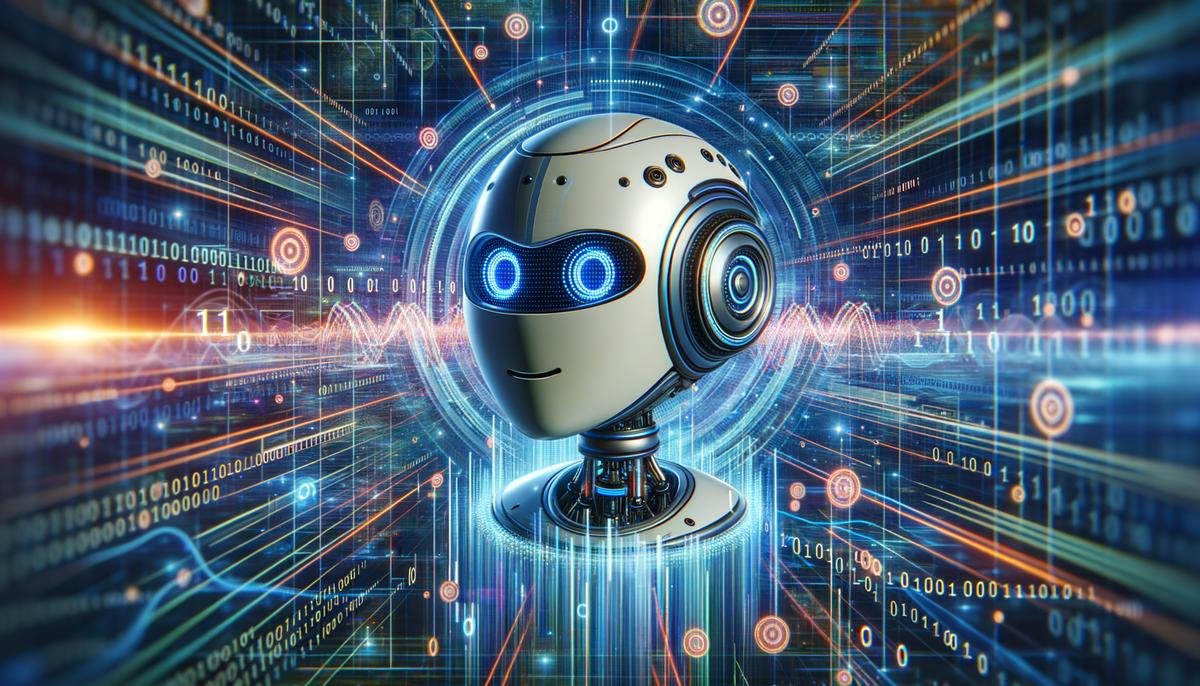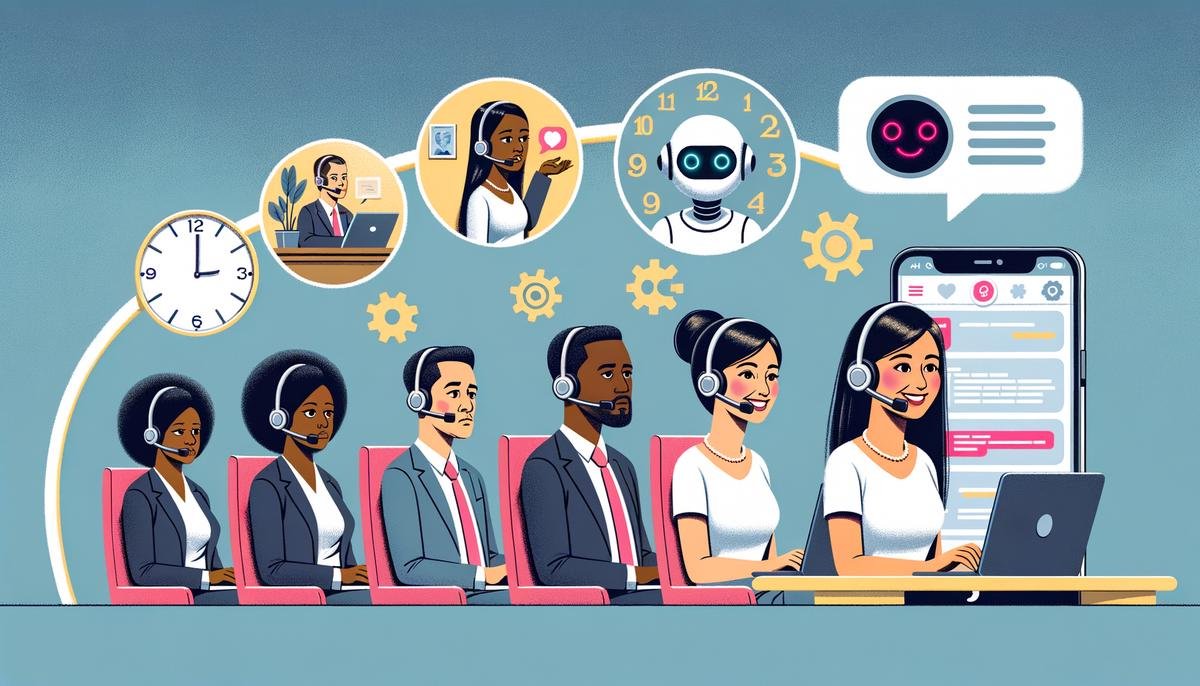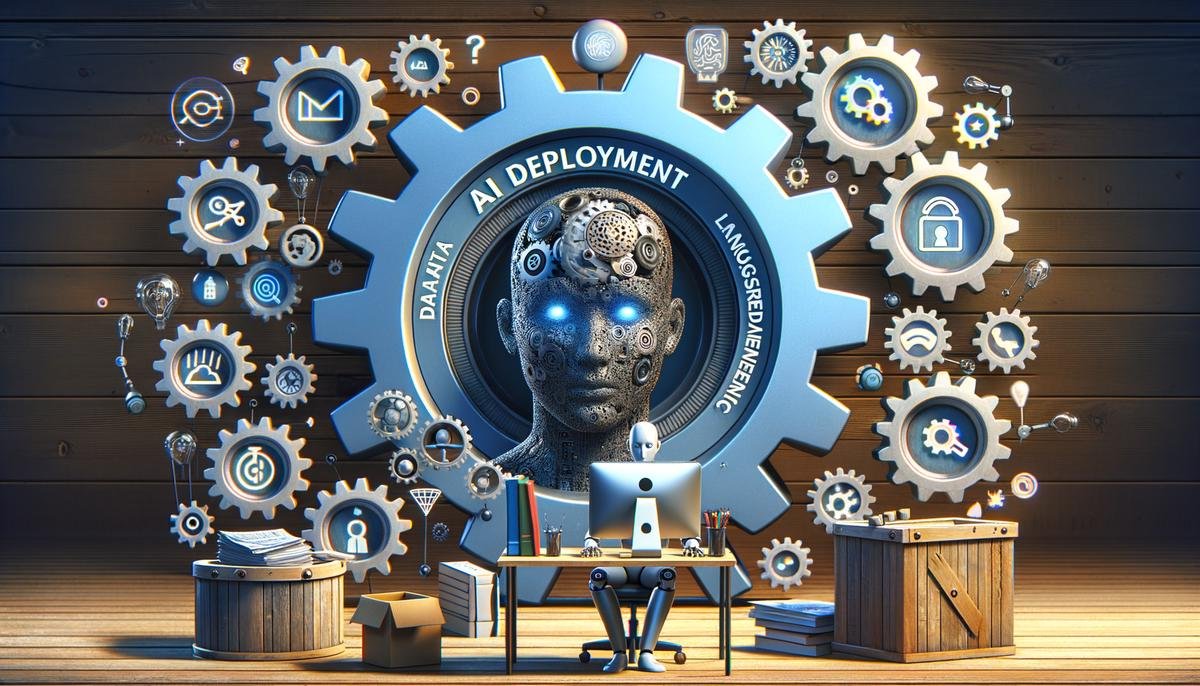As we step into the realm of AI chatbots, particularly those powered by Salesforce, we find ourselves at an exciting crossroads of technology and customer service. This article embarks on an exploration of what differentiates Salesforce’s AI-powered chatbots in a rapidly evolving landscape, and how these innovations are setting new standards in customer interactions. Through an examination of their unique capabilities and potent potential for transformation, a narrative unfolds that not only highlights their current influence but also future possibilities in enhancing customer engagement.
Understanding Salesforce AI-Powered Chatbots
Salesforce’s AI Chatbots: A Closer Look at Their Uniqueness
Salesforce, a leading name in customer relationship management (CRM), has been making strides in AI chatbot technology. These chatbots, powered by Salesforce’s AI, are designed to transform customer service by offering personalized and efficient interactions. But what sets Salesforce’s AI chatbots apart in a market that’s becoming increasingly crowded with AI-driven solutions?
Firstly, the integration capabilities of Salesforce’s AI chatbots are a major differentiator. Unlike standalone chatbot solutions, Salesforce’s chatbots are deeply integrated into the Salesforce ecosystem. This means they can access and leverage data from Salesforce CRM, providing a more personalized and informed customer service experience. For example, when a customer interacts with a chatbot, the bot can quickly access the customer’s history, preferences, and past purchases to offer more relevant assistance.
Secondly, Salesforce’s AI chatbots are equipped with advanced natural language processing (NLP) capabilities. This allows them to understand and process human language more effectively, enabling smoother and more natural conversations with users. Whether a customer types in slang, makes a typo, or uses complex queries, Salesforce’s chatbots can decipher the intent and respond appropriately. This level of understanding enhances the user experience, making interactions with the chatbot feel more like talking to a human.
Additionally, the learning ability of Salesforce’s chatbots sets them apart. These chatbots are designed to learn from every interaction. Over time, they become smarter and more efficient in handling queries. This continuous learning process is driven by Salesforce’s AI, which analyzes interactions to identify patterns, understand new types of queries, and improve response accuracy. As a result, Salesforce’s chatbots become more adept at resolving issues and providing information, reducing the need for human intervention.
Customization is another key feature of Salesforce’s AI chatbots. Organizations can tailor the chatbots to fit their specific needs and branding. This includes customizing the conversation flow, responses, and even the bot’s personality. Such customization ensures that the chatbot aligns with the organization’s customer service approach, providing a consistent and branded experience across all customer touchpoints.
Lastly, Salesforce’s AI chatbots are designed with scalability in mind. As businesses grow and customer interactions increase, the chatbots can easily scale to handle the growing volume of queries. This scalability ensures that customer service remains responsive and efficient, even during peak times or as an organization expands its customer base.
In conclusion, Salesforce’s AI chatbots stand out due to their deep integration capabilities, advanced understanding of natural language, ability to learn and improve over time, customization options, and scalability. These features make Salesforce’s AI chatbots a powerful tool for organizations looking to enhance their customer service and engage with customers in a more personalized and efficient manner.

Integration of Chatbots in Customer Service
How do chatbots transform customer service? To understand this, we must explore beyond Salesforce’s advanced AI solutions. Across the digital landscape, chatbots are revolutionizing the customer service industry in ways that are subtle yet profoundly impactful.
First and foremost, chatbots offer 24/7 accessibility. Unlike human agents, these digital assistants don’t need breaks or sleep. This round-the-clock availability means customers can receive immediate responses to their inquiries at any hour, reducing wait times and significantly improving customer satisfaction.
Next, consider the efficiency gains. Chatbots can handle multiple interactions simultaneously, a feat no human can match. This capability ensures that a sudden surge in customer queries doesn’t overwhelm the service channels. For businesses, this translates to reduced pressure on customer service teams and substantial cost savings, as fewer human agents are needed to manage routine queries.
Accuracy and consistency in responses are additional benefits. Chatbots follow programmed scripts and access vast databases to provide precise answers. This uniformity ensures every customer receives the same level of information and guidance, eliminating human error or variability in service quality.
Furthermore, chatbots are proving to be invaluable analytical tools. Every interaction generates data – data that businesses are harnessing to gain insights into customer behavior, preferences, and pain points. This information informs service improvements and product innovations, thus driving business strategy in a customer-centric direction.
Moreover, the integration of chatbots into messaging platforms and social media widens the scope of customer engagement. Many customers prefer the convenience and familiarity of reaching out via platforms they regularly use. Chatbots positioned on these channels meet customers where they already are, enhancing engagement and accessibility.
Lastly, the evolution of chatbots through machine learning technologies presents an exciting future. As these systems handle more interactions, they refine their ability to understand and process complex queries. This self-improvement loop promises a future where chatbots could potentially resolve more intricate customer issues, blurring the lines between human and machine capabilities in service contexts.
In conclusion, chatbots are transforming customer service by making it more accessible, efficient, and personalized. As they evolve, the potential to further revolutionize this domain is undeniable, heralding a new era where digital assistants seamlessly anticipate and meet customer needs, driving forward both satisfaction and business growth.

Personalization Through Machine Learning
Machine learning is revolutionizing the way we interact with businesses. But how does it specifically enhance customer interactions? At its core, machine learning is a type of artificial intelligence that enables software applications to become more accurate in predicting outcomes without being explicitly programmed to do so. This technology is particularly beneficial in personalizing customer interactions. Let’s delve into how this works.
Firstly, machine learning algorithms analyze a vast amount of data from past interactions with customers. This data includes purchase history, browsing behavior, and even customer service inquiries. By examining these data points, the algorithms can identify patterns and preferences unique to each customer. This information is crucial for businesses to understand what their customers want, sometimes even before the customers know it themselves.
One practical application of this is in product recommendations. E-commerce platforms leverage machine learning to suggest items you’re likely to buy, based on your past purchases and items you’ve browsed. This isn’t just guesswork; it’s a calculated suggestion based on analyzing behaviors of thousands, if not millions, of similar customers. This personalized approach makes shopping more engaging, increasing the likelihood of a purchase.
Another significant benefit is in customer service. Through machine learning, chatbots or virtual assistants can offer a more personalized service to each customer. These AI-driven systems learn from every interaction, becoming better at understanding and responding to customer queries over time. They can access a customer’s purchase history or previous complaints in real time, provide relevant solutions, and sometimes even anticipate problems before they are articulated by the customer, enhancing the overall customer experience.
Furthermore, machine learning plays a critical role in offering dynamic pricing. Some businesses change their pricing based on customer demand, availability, and even customer behavior. For instance, a frequent shopper might be offered a special discount as an incentive, a gesture made possible by machine learning algorithms analyzing the customer’s shopping habits.
Additionally, machine learning assists in predictive customer service. By analyzing past service requests and outcomes, algorithms can predict potential issues or questions and proactively offer solutions to customers. This not only helps in resolving problems before they escalate but also shows customers that a business is attuned to their needs, fostering a sense of loyalty.
In conclusion, machine learning significantly enhances customer interactions by making them more personalized, efficient, and anticipatory. Through analyzing data and identifying unique customer patterns, businesses can tailor their services to meet and exceed customer expectations, resulting in increased satisfaction and loyalty. Whether through personalized product recommendations, dynamic customer service, or predictive problem-solving, machine learning is at the forefront of transforming customer interactions in the digital age.

Challenges and Solutions
Understanding and Overcoming AI Chatbot Deployment Challenges
The deployment of AI chatbots has become an essential strategy for businesses looking to enhance customer interaction and service efficiency. Despite their advancements and benefits, rolling out AI chatbots presents several challenges that organizations must navigate to ensure successful implementation and utilization. We will explore the main hurdles in deploying AI chatbots and discuss strategies to address these issues.
Firstly, privacy and data security concerns stand at the forefront. With AI chatbots collecting and processing vast amounts of personal data, ensuring the privacy and security of this information is paramount. Organizations must adhere to strict data protection regulations, like GDPR in Europe and CCPA in California, necessitating robust data encryption and user consent mechanisms within their chatbot interfaces.
Secondly, understanding and processing human emotions pose a significant challenge. Despite advancements in natural language understanding (NLU), AI chatbots often struggle to interpret the nuances of human emotions, sarcasm, and humor, potentially leading to misunderstandings or dissatisfaction in customer interactions. Continuously training AI models on diverse data sets can gradually improve their emotional intelligence.
Another key challenge is achieving seamless human-AI handoff. There are instances where the chatbot may not fully resolve a customer’s query or issue, necessitating intervention from a human operator. Ensuring a smooth transition from chatbot to human, without requiring the customer to repeat information, is crucial for maintaining customer satisfaction. This involves sophisticated backend integration and real-time data sharing between chatbots and human support systems.
Maintaining conversational context over multiple interactions can also be daunting. Customers expect continuity in conversation, even if they return hours or days later. AI chatbots need to remember past interactions and context to provide coherent and relevant responses. This requires advanced data management and retrieval systems that can quickly access and process historical interaction data.
Lastly, the challenge of continuous improvement and learning is ever-present. AI chatbots must constantly learn from interactions to improve their responses and expand their knowledge base. This involves ongoing data analysis, user feedback collection, and model retraining to adapt to evolving customer needs and preferences.
In conclusion, deploying AI chatbots involves navigating through complex privacy, emotional understanding, human-AI handoff, conversational context, and learning challenges. By addressing these issues through rigorous data protection measures, emotional intelligence training, seamless integration, advanced data management, and continuous learning, organizations can effectively harness the power of AI chatbots to revolutionize customer service and engagement.

Future Trends in AI Chatbots
Looking ahead, the landscape of AI chatbots is teeming with potential, poised to revolutionize the way businesses interact with their customers. As technology marches forward, we’re on the cusp of witnessing groundbreaking advancements that will further blur the lines between human and machine communication. Here’s a glance into what the future may hold for AI chatbots.
Enhanced Emotional Intelligence: While current AI systems can understand text and voice commands, future chatbots are expected to interpret tone, emotion, and even sarcasm. This advancement will enable chatbots to respond in a more empathetic and contextually appropriate manner, making interactions feel more like conversing with a human than a machine. By analyzing voice modulations and text semantics, these AI entities will offer tailored responses, thereby elevating the user experience to unprecedented levels.
Voice and Visual Processing: Imagine interacting with a chatbot not just through text or voice, but also via images or video. Future AI chatbots are likely to possess the capability to process and respond to visual inputs. This means you could show a chatbot an image of a product you’re interested in, and it could provide information, suggest purchases, or even troubleshoot problems based on what it sees. The integration of visual processing could transform customer service, especially in industries like fashion, retail, and tech support.
Multilingual and Cultural Adaptability: As businesses grow globally, there’s a pressing need for AI chatbots that can communicate in multiple languages and adapt to cultural nuances. Future chatbots will surpass simple translation, understanding and respecting cultural contexts in interaction. This capability will significantly enhance global customer service, allowing businesses to provide a personalized experience to customers from diverse backgrounds without language barriers.
Predictive Capabilities: Future AI chatbots will not just react to queries but anticipate them. Leveraging vast amounts of data, these chatbots will predict user needs and offer solutions before the user even asks. For instance, a chatbot might remind you to order a product before you run out or suggest a restaurant reservation if it knows you’re planning a weekend outing. This proactive approach can streamline customer interaction, making it more efficient and intuitive.
Seamless Omnichannel Experience: Customers interact with businesses across multiple platforms – from social media and websites to emails and messaging apps. Future AI chatbots will provide a seamless omnichannel experience, maintaining conversation history and context across all platforms. This means you could start a conversation on a business’s website and continue it on a social media platform without having to repeat yourself. Such a fluid experience will significantly enhance customer satisfaction and engagement.
Collaborative Bots: Imagine a future where AI chatbots work alongside humans, not just as standalone systems. These collaborative bots could assist customer service representatives by providing real-time information, suggesting responses, or even taking over routine tasks, allowing humans to focus on more complex and emotionally sensitive interactions. This collaboration could optimize the workforce, reduce response times, and improve service quality.
In conclusion, the horizon of AI chatbots is brimming with possibilities that promise to transform customer service into a more interactive, responsive, and personalized experience. As these technologies evolve, businesses will have the opportunity to forge deeper, more meaningful connections with their customers, setting new benchmarks for what we expect from digital interactions.

As we wrap up our exploration of Salesforce AI-powered chatbots and the transformative potential they hold within the sphere of customer service, it becomes clear that these tools are more than just automated responders. They stand as pivotal elements in redefining interactions between businesses and their customers, offering a blend of efficiency, personalization, and scalability that was once deemed futuristic. With a promising horizon enriched by continuous advancements and innovative applications, Salesforce’s chatbots are not just participating in the evolution of customer service; they are actively shaping its future, promising a landscape where enhanced communication and deepened connections become the stalwarts of customer engagement.




